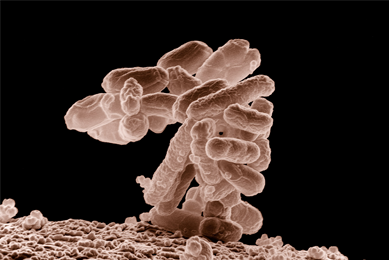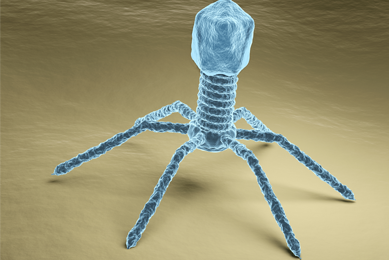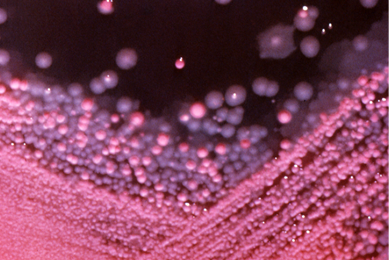Why it’s important
Biofilms are challenging to eradicate using chemical disinfection and they enable the continuous dispersal of bacteria onto meat products. Because these foodborne bacterial pathogens can cause serious disease, finding safe and effective ways to break down and destroy biofilms is essential for food safety.What’s the solution?
To eliminate biofilms, scientists have turned toward bacteria’s natural enemy: bacteriophages. Bacteriophages are viruses that infect and replicate in bacterial cells following either lytic or lysogenic cycles. The lytic cycle results in the lysis—and subsequent death—of the bacterial host and the release of more bacteriophages ready to infect nearby bacteria. Many bacteriophages have also demonstrated the ability to produce enzymes that penetrate and degrade biofilms, making them a useful biocontrol agent against foodborne bacteria.But wait! Bacteriophages are viruses—aren’t viruses bad? Not necessarily. Bacteriophages only infect specific species or strains of bacteria; they are unable to infect human and animal cells and are thus considered harmless to people. In fact, they are a common inhabitant of the human microbiome and have already been approved by the FDA for use in ready-to-eat meat and poultry products since 2006.
While bacteriophages are useful, there are several factors that can affect the ability of the virus to penetrate biofilms and infect the bacteria. For example, biofilms can comprise multiple species; this can present a significant challenge as bacteriophages are highly specific for which host they can infect. Other aspects to consider include variations in the biofilm-forming ability between different bacterial strains and species, the stage of biofilm formation, if the bacteriophages produce the necessary enzymes needed to break down the biofilm matrix, and the life cycle of the bacteriophages.
Essentially, the interconnectivity between living species is complex, underscoring why research into these interactions is so important. ATCC supports such research with an extensive portfolio of authenticated and highly characterized bacteriophages and bacterial strains, including the E. coli strains (ATCC BAA-1430, ATCC 11303) used in a recent study by González-Gómez et al. that evaluated the efficacy of novel bacteriophages against E. coli biofilms formed on stainless steel.
Cara Wilder, PhD, ELS
Senior Scientific Writer, ATCC
Dr. Wilder is a Senior Scientific Writer at ATCC. She has a PhD in Microbiology with background experience working with several pathogenic bacterial species in both in vitro and in vivo environments. Dr. Wilder is the author of numerous publications on varying topics of scientific relevance, including quality control, microbial contamination, assay development, proficiency testing, and multidrug resistance.
Start your bacteriophage research with authenticated materials

Bacteriology and Archaea
ATCC offers a variety of bacterial and archaeal strains with applications in a variety of research and industrial applications. Our growing portfolio includes antimicrobial-resistant strains, quality control organisms for commercial identification systems, a wide selection of extremophile strains, and genomic and synthetic DNA.
More
Bacteriophages
Since their discovery, bacteriophages have shown incredible promise as an alternative treatment for bacterial infections in humans. With the emergence of antimicrobial resistance among bacteria, understanding the therapeutic potential of bacteriophage therapy has become more important than ever. Explore our growing collection of bacteriophages and get your research started today.
More
Food Testing
Rigorous quality control testing is essential to ensure food products are not contaminated before they get to the consumer. Trust ATCC food testing solutions for the authenticated reference materials needed to maintain outstanding food safety programs.
More